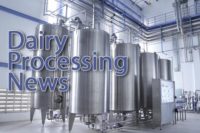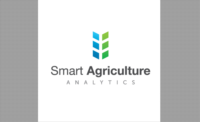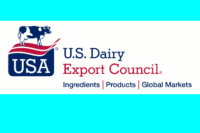Mary Beth de Ondarza, dairy nutritionist at Paradox Nutrition, identified two key factors for farm profitability and efficiency: maximizing efficiency and nutrient digestion. Maintenance of a healthy rumen for maximum nutrient digestion and a high level of microbial protein yield are vital for optimal feed efficiency. Issues such as sub-clinical ruminal acidosis need to be handled by paying attention to the total dietary starch and sugars, the speed of starch digestion, dietary fiber, as well as the amount of chewable fiber in the diet. De Ondarza explained that increasing rumen microbial protein synthesis increases milk production by the use of carbohydrates and degradable protein.
Joep Driessen, general manager at CowSignals, held a session about practical ways to improve young stock rearing.
“Calving needs to be clean and quiet. Cows should be milked within two hours of calving to get the best quality colostrum. These six to eight liters of milk could be the key in preventing the calf from developing diarrhea and pneumonia,” Driessen said.
Driessen also stressed the importance of feeding the cow three meals after calving in order to maintain higher milk production. He advised farmers to measure animals’ growth, inseminate early and secure a fresh, warm microclimate for the animal.
Finally, Robert Erhard, director of Corporate Fresh Milk and Agricultural Service, Nestlé, Greater China Region, introduced Nestlé’s recent $396 million investment in building the Dairy Farming Institute, a world-class dairy training centre in Shuangcheng, Heilongjiang province. With this unique project, Nestlé is aiming to become China’s reference for dairy farming management and partner with companies such as Alltech, who will provide a worldwide network of dairy experts and will hold educational services about nutrition to students, visitors and farmers.
“Our target now is 32,500 kg of milk,” said Lyons. To make this goal a reality, he urged the audience to adapt new technologies such as the use of alternative feed ingredients, algae and mycotoxin management in order to significantly increase animal performance and profitability while reducing the cost of feed.
Inside China
China's dairy farmers must increase production to meet demand for milk
Milk consumption in Chinese urban areas is 4.5 times higher than in rural areas. With the increasing urban population and the rapidly growing middle class, milk consumption is expected to further grow.

At the China Dairy Symposium in Beijing (from left ): Tyler Bramble, Alltech; Frank Delfino, Delfino Nutrition and Management; Mark Lyons, Alltech; Dan N. Waldner, Valley Nutrition; and Robert Erhard, Nestlé discussed issues such as consumer confidence and reducing feed costs.


